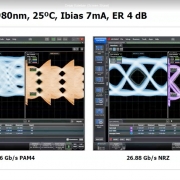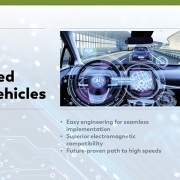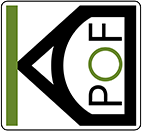KDPOF congratulates the 802.3cz Task Force for the advance of the proposed IEEE 802.3cz standard to the IEEE 802.3 Working Group ballot stage. “We are happy that the IEEE 802.3 automotive optical multi-gigabit technically complete standard draft has entered the Working Group ballot stage,” stated Carlos Pardo, KDPOF CEO and active participant in the IEEE 802.3 working group. Read more
KDPOF will give insight on “Automotive Communications Standards” at the IEEE Conference “Use of Standards in Industry: IoT, Robotics, Automotive, and Communications” on 20 April 2022 in Madrid, Spain. The IEEE event will discuss the importance of the different standards and their use and impact on the industry in different sectors such as automotive, communications, satellites, etc. In his presentation, Luis Manuel Torres, Principal Engineer at KDPOF and Editor-in-Chief of the IEEE 802.3cz standardization project “Multi-gigabit Optical Automotive Ethernet”, will give a general view of the most important automotive standards, with special emphasis on in-vehicle communication standards.
At the recent CES 2022, Funzin and KDPOF have jointly presented their optical in-vehicle network solution for autonomous vehicles. Funzin, software development and edge AI solution company, have implemented KDPOF’s KD1053 PHY IC and integrated KD9351 FOT (fiber optic transceiver) in the new Funzin AIoT Platform “FAIP 3.0” and Edge AI Device “Photon” for automotive. Read more
At the recent Members New Product Release Event by EPIC (European Photonics Industry Consortium), César Esteban has presented our integrated KD9351 FOT that reduces cost for gigabit connectivity, thus providing efficient optical technology for safe backbone and ADAS sensor links in vehicles.
Read more
KDPOF has displayed their high-speed connectivity solutions for the communications in vehicle data networks at the IEEE SA Ethernet & IP @ Automotive Technology Days from November 3 to 4, 2021 in Munich, Germany, and online. Optical connectivity perfectly solves the electrical challenges and interference in vehicles thanks to its low weight, low cost, and electromagnetic compatibility due to inherent galvanic isolation. Read more
KDPOF proudly announces that Funzin, software development and edge AI solution company, have integrated their KD1053 IC and integrated KD9351 FOT (fiber optic transceiver) in the new Funzin AIoT Platform “FAIP 3.0” and Edge AI Device “Photon” for automotive. “An automated driving car requires networks capable of controlling and processing a great deal of sensor data,” explained Ms. Deuk Hwa Kim, CEO/President of Funzin. “Our automotive network solution features an Ethernet backbone environment based on plastic optical fiber (POF) to eliminate electronic wave interference.” Read more
At the virtual Wire Harness Congress (Bordnetz-Kongress) by WEKA Publishing on September 22, 2021, KDPOF displayed the status of optical multi-gigabit connectivity in vehicles. In their presentation, Juergen Schachtschneider, Automotive Manager Central Europe & Greater China, and César Esteban, Applications & Support Manager, proposed a complete optical communications system, which is under development by KDPOF and their industry partners.
Read more
At the Members New Product Release Event by EPIC (European Photonics Industry Consortium) on 18 January 2022 at 16:00 CET, César Esteban will present our integrated KD9351 FOT that reduces cost for gigabit connectivity, thus providing efficient optical technology for safe backbone and ADAS sensor links in vehicles.
Read more
At the IEEE SA Ethernet & IP @ Automotive Technology Week from November 3 to 4, 2021 in Munich, Germany, and online, KDPOF will display their high-speed connectivity solutions for the communications in vehicle data networks. Optical connectivity perfectly solves the electrical challenges and interference in vehicles thanks to its low weight, low cost, and electromagnetic compatibility due to inherent galvanic isolation.
The KDPOF team is proud to have been selected as one of 40 startups for High-tech Venture Days (HTVD). HTVD is a platform and annual program for startups, investors and corporates. The aim is to foster innovation made in Europe by providing access to capital for high-tech startups that deliver patent-based technologies for B2B applications. This year’s event will take place from 26 to 27 October 2021, in Dresden, Germany, and online from 28 to 29 October 2021.
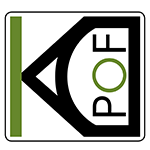
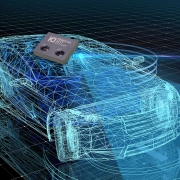
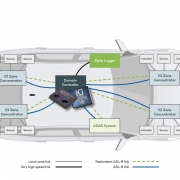
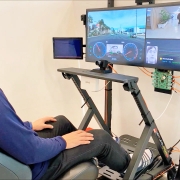
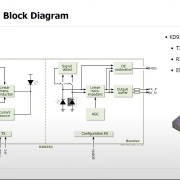
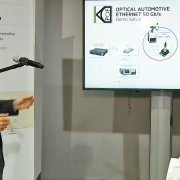
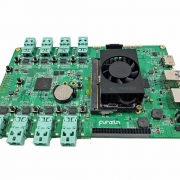 Funzin
Funzin